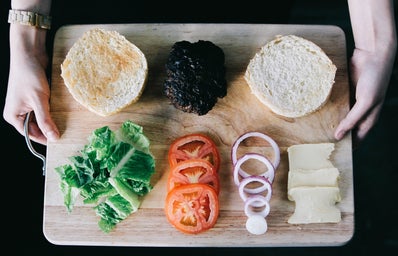When you don’t have time to prepare your own meal, it can be difficult to find a nutritious, cost effective backup plan. Whether you forgot to pack your lunch to take to campus or you just need to switch it up, buying a healthy, cheap meal can be a challenge. Look no further than the salad bar.
If you’re in a grocery store or a cafeteria, you’re probably going to be paying for your salad by weight. Of course, you want as much bang for your buck as possible, so it’s important to know what you’re putting in that box.
Though salads are typically full of vegetables, proteins are also a necessary inclusion. However, protein options like kidney beans and chicken salad can add a lot of weight to your box. Instead, opt for something equally as protein packed: a hard boiled egg. One large hard boiled egg that weighs about 50 grams has six grams of protein. To get the same amount of protein from kidney beans, you would need twice that weight, according to Self.com.
Similarly, choose lightweight vegetables. If possible, aim for the ones that aren’t sitting in water, soaking up the added weight. Romaine lettuce is often more waterlogged than spinach. A cup of romaine weighs about 17 more grams than a cup of spinach. To make a bigger salad with some variety, go for both, but go heavier on the spinach than romaine. And for other veggies, if you can, choose several small pieces of a vegetable, like broccoli, rather than big chunks. This will likely reduce the overall weight of your salad and also make your bites more consistent.
When it comes to things like toppings—shredded carrots, bacon bits or cheese, for instance—ask yourself if you really care if they’re there. I often find myself adding those things simply for color. I don’t really miss the taste of shredded carrots when they’re not there, so why pay extra? Sure, cheese and bacon make the salad taste a little better, but they also kind of defeat the purpose of a healthy lunch, don’t they? Go for the things that will really make up the salad: lettuce/spinach and fruits/veggies (that you like). If you can’t do without the cheese, pick cottage cheese over shredded cheddar. It weighs more, but it’s better for you. According to Self.com, a half-cup of shredded cheddar weighs about 60 grams, with 225 calories, 18.5 grams of fat and 14 grams of protein, while a half-cup of cottage cheese is 113 grams, but only 111 calories and 5 grams of fat, and still has 13 grams of protein.
Last, but not least: dressing. Some places let you put your dressing in a side cup and don’t make you pay for it. If that’s an option, definitely don’t put it on your salad before you hit the register. Also, putting your dressing in a cup allows you to see how much you’re really using. You probably need less than you think. You don’t want to drench your salad, just lightly coat it in some flavor. If side cups aren’t available, aim for dressings like oil and vinegar rather than a heavy, creamy dressing. This will save you fat, calories and weight.
There are plenty of ways to turn your possibly healthy lunch into nearly the same thing as a personal pan pizza, which is probably the opposite of what you were aiming for by making a salad. Just be careful what you’re putting in your salad bar box, and don’t be fooled into thinking something is healthy just because it’s on the salad bar (shredded cheddar, I’m looking at you). These salad bar tips will make your quick lunch more enjoyable and more affordable.

